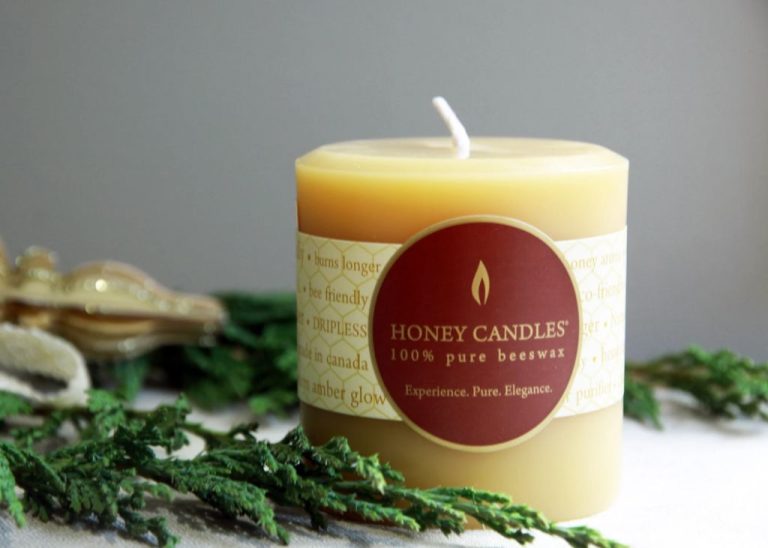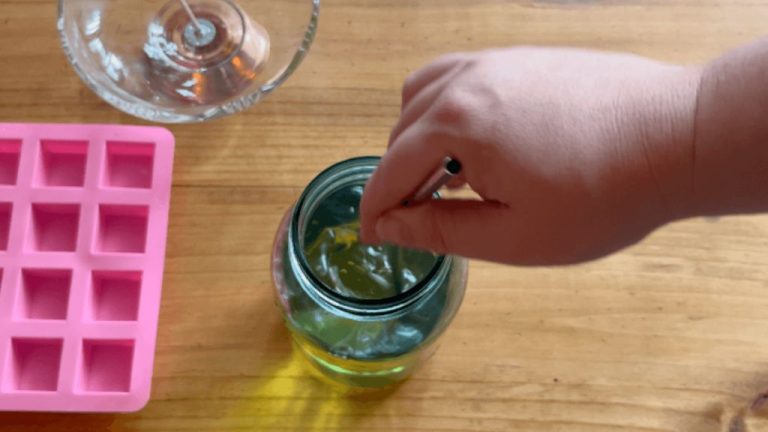Where Does Wax Come From Naturally?
Wax is a natural substance produced by insects, plants, and petroleum. It is a malleable and moisture-resistant organic material with low melting point and high viscosity. Waxes are defined as hydrocarbons with long aliphatic chains containing more than 20 carbon atoms per molecule. They can exist as solids, semisolids, or viscous liquids. Waxes have important commercial and industrial applications due to their unique physical and chemical properties.

Waxes provide protection, waterproofing, and lubrication across a range of products and processes. They are used in food packaging, cosmetics, pharmaceuticals, polishes, textiles, inks, and more. Waxes help prevent corrosion, provide thermal insulation, give surfaces a glossy finish, and facilitate mold casting. This versatility makes wax extremely useful in our daily lives.
In nature, wax is secreted by insects and plants or found in petroleum deposits. Beeswax is produced by honey bees to build their honeycombs. Plant waxes coat the external surfaces of leaves and stems to prevent water loss. Mammalian waxes lubricate skin and hair. Some marine animals secrete waxes as well. Fossilized plant and animal waxes are found in petroleum, shale, and coal deposits. This article will examine the major natural sources of wax in more detail.
Beeswax
Beeswax is a natural wax produced by honey bees in their beehives. Beeswax is secreted from eight wax-producing glands on the worker bee’s abdomen and is used by bees to form the walls and caps of the comb. Bees convert honey into beeswax by eating honey and metabolizing it inside their bodies. The wax is then excreted in thin sheets from their wax glands (1).
The main chemical component of beeswax is myricyl palmitate, an ester of triacontanol and palmitic acid. It also contains other long-chain alcohols, hydrocarbons, and free fatty acids (2). The exact composition of beeswax varies slightly depending on the bees’ diet and age. However, beeswax from worker bees raised in typical beehives is generally very consistent (3).
Beeswax has many uses, both historically and in modern times. The primary use of beeswax has always been in constructing the honeycomb cells of beehives. Beekeepers also harvest beeswax from hives to use in various commercial applications like candles, cosmetics, pharmaceuticals, chewing gum, and food glazing. Beeswax is also popular as a natural lubricant and waterproofing agent (4).
(1) https://www.buzzaboutbees.net/beeswax.html
(2) https://www.quora.com/Is-beeswax-chemically-different-from-petroleum-based-waxes
Plant Waxes
Plants such as bayberry and candelilla produce wax on their leaves and stems as a way to prevent water loss. This waxy coating helps retain moisture during hot or dry conditions. To extract the wax, the leaves and stems are boiled in water, causing the wax to rise to the surface where it can be skimmed off. The wax is then filtered and pressed into cakes or flakes.
Plant waxes have a variety of commercial uses. Candelilla wax is often used as a substitute for carnauba wax in products like lip balm, lotion, and shoe polish. It helps bind ingredients, alter texture, and act as a natural emulsifier. Bayberry wax is utilized in candle making due to its aromatic properties and ability to hold a tapered form. It can also be used to make soaps and cosmetics.
Compared to other waxes, plant waxes are generally harder and have a higher melting point. This makes them useful for giving structure and durability to products. Their natural origin also appeals to consumers looking for eco-friendly ingredients.
Animal Waxes
Wax is produced naturally by some animals, most notably woolly animals like sheep and goats. The wax in sheep wool is called lanolin or wool wax. Lanolin makes up 5-25% of the weight of freshly shorn wool (https://www.sciencedirect.com/topics/agricultural-and-biological-sciences/lanolin). Lanolin is extracted from sheep wool through a process called scouring, where the wool is washed to remove dirt, grease and impurities (https://www.youtube.com/watch?v=d2pEIsyWD-Y).
Lanolin is composed mainly of long chain fatty acids like lanoceric acid. It has many commercial uses, particularly in cosmetics and skincare products. Lanolin acts as an emollient and skin protectant. Some people can have skin reactions or allergies to lanolin, but overall it is considered safe for topical use.
Other wax producing animals include certain birds like ducks, which produce preen wax from their oil glands to coat and protect their feathers. Bees also produce wax, which will be covered separately.
Petroleum Waxes
Petroleum waxes are derived from crude oil through the process of fractional distillation. Crude oil is heated, and its components distill into fractions according to boiling point. One of the heavier fractions produced is a mixture of hydrocarbons called petroleum jelly or mineral oil. Mineral oil can be further refined into paraffin wax, a tasteless and odorless wax composed of saturated hydrocarbons. Paraffin wax has many uses including candles, wax paper, lubrication, and cosmetics.
Sources:
https://businessanalytiq.com/procurementanalytics/index/paraffin-wax-price-index/
https://www.chemiekontor.de/en/waxes/paraffin-wax/
https://urbanvegan.net/paraffin-wax/
Fatty Acid Waxes
Fatty acid waxes are produced through the hydrogenation of fatty acids derived from animals and plants. Sources of fatty acids include tallow (beef fat), lanolin (from sheep’s wool), and various plant oils such as soybean, palm, and coconut oil.
The fatty acids undergo hydrogenation, which is a chemical process that converts unsaturated fatty acids into saturated ones through the addition of hydrogen. This changes the chemical structure, turning oils into solid waxes with higher melting points.
Some common fatty acid waxes include:
- Soy wax – Produced from soybean oil and often used in candles. Soy wax burns cleaner than paraffin wax with no petroleum byproducts. “What EXACTLY is Soy Wax?”
- Tallow wax – Derived from beef or mutton fat and used in candles, lubricants, and protective coatings.
- Lanolin wax – Made from lanolin alcohol extracted from sheep’s wool and used in cosmetics and lubricants.
The hydrogenation process allows fatty acids to be turned into solid waxes with customized properties like melting point, hardness, and viscosity. This makes them versatile base ingredients for many commercial products.
Fossilized Waxes
Plant and animal waxes can fossilize over time into fossil wax. Examples of fossil waxes include ozokerite, montan wax, and ceresin wax. These waxes originate from fossilized plant or animal material that has been subjected to high pressure and temperatures over millions of years.
One of the most common fossil waxes is ozokerite, which comes from fossilized resin and plant material. It is found in deposits around the world, often near coal or oil shale deposits. Ozokerite was used historically for candles, soap, wax paper, and as an insulating material 1.
Montan wax comes from lignite, a type of coal. It is extracted through solvents and was historically used for candles, polishes, carbon paper, and electrical insulators. Ceresin wax originates from fossilized plant waxes and hydrocarbons. It is a hard microcrystalline wax that can be used for products like candles, polishes, and electrical components 2.
Chemical Synthesis
Some wax compounds can be synthesized in the chemical process from reactants. The best example is polyethylene glycol, or PEG, which is synthesized by polymerization of ethylene oxide. Polyethylene glycol (PEG) is a polyether compound that is widely used in pharmaceutical products, cosmetics, detergents, lubricants and other materials. The molecular structure of polyethylene glycol contains repeated units of ethylene glycol with different molecular weights (Ghaffari 2020).
Polyethylene glycol waxes are commercially produced and available in different average molecular weights ranging from 200 to over 35,000, with low molecular weight PEGs being liquids and higher molecular weight PEGs being waxy solids. The molecular weights determine the physical properties and applications (Biochempeg 2019). PEG can be produced by anionic polymerization of ethylene oxide with a suitable initiator like ethylene glycol or water. The polymerization process can be modified to produce PEGs of different molecular weights for various commercial uses.
References:
Ghaffari, A. (2020). New polymer systems based on polyethylene glycol: synthesis, characterization, and study of the solubility behavior. Polymer Bulletin. https://link.springer.com/article/10.1007/s00289-019-03041-1
About Polymer PEG and Monodisperse PEG. (2019). https://www.biochempeg.com/article/56.html
Major Commercial Uses
Waxes have a wide variety of commercial applications due to their unique physical and chemical properties. Beeswax in particular is used commercially in products like cosmetics, polishes, candles, and as a food additive (Source). Plant waxes like carnauba wax and candelilla wax are commonly used to make products like floor polish, automobile polish, dental floss, and surfboard wax (Source). Petroleum waxes like paraffin are widely used in adhesives, paints, rubbers, and sealants. Chemically synthesized waxes find commercial applications in cosmetics, pharmaceuticals, plastics, textiles, and more.
Conclusion
In summary, there are several natural sources of wax that are commercially important. Beeswax, secreted by honeybees to construct their honeycombs, has been used by humans for thousands of years. Plant waxes like carnauba, candelilla, and rice bran help coat leaves and fruit. Waxy oils in jojoba seeds, olive oil, and soybean oil contain fatty acids that can be refined into waxes. There are also animal waxes like lanolin from sheep wool grease and whale wax from sperm whale oil. Finally, fossilized plant and animal waxes like montan wax and ozokerite can be mined. While synthetic waxes have displaced natural waxes for some industrial uses, many high-value natural waxes are still in demand today.
Wax has served vital functions across human history, from candlemaking to medicines, cosmetics, art, and food preservation. Beeswax allows honeybees to build honeycomb structures. Plant and animal waxes protect against water loss. Refined waxes impart water resistance, lubrication, consistency, and shine to commercial products. Our lives are immeasurably enriched by the diverse sources and uses of natural wax.




